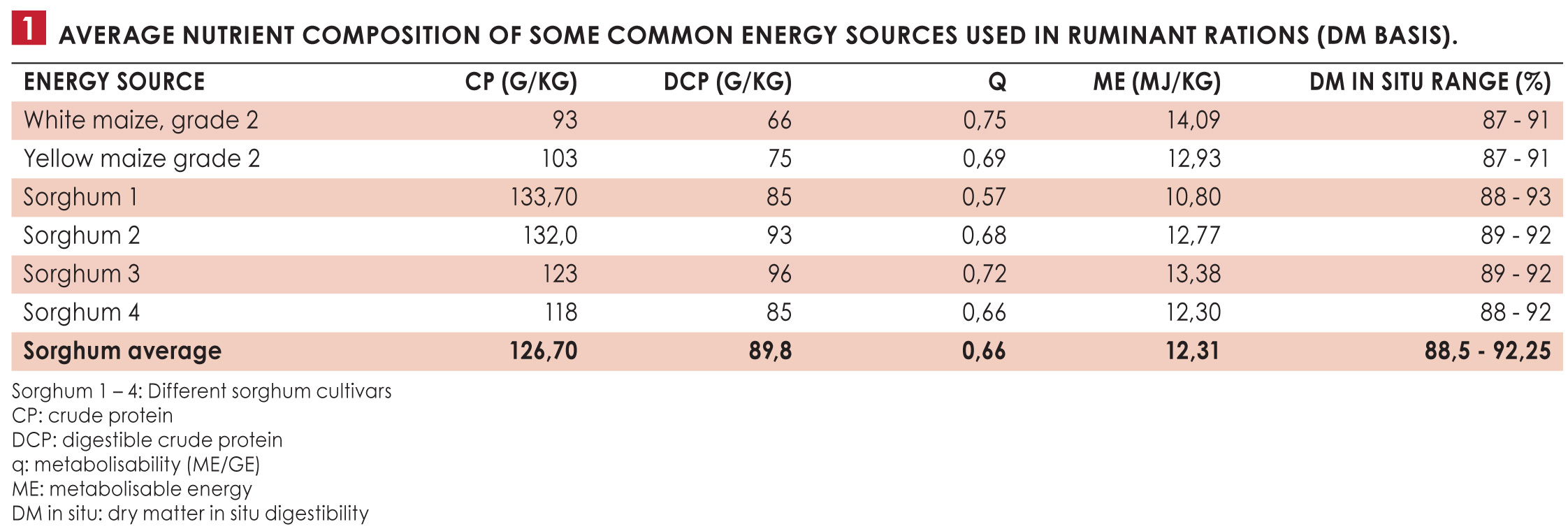Recently researchers from the Council for Scientific and Industrial Research (CSIR) and the South African Weather Service (SAWS) stressed the need for early anticipation of the potential of a pending El Niño event across South Africa. Although the impact of the event is uncertain, previous El Niño events (2015/2016) had a severe impact on seasonal rainfall and temperatures, especially in central South Africa, affecting maize production amongst other agricultural practices.
Maize and maize byproducts are some of the most significant livestock feed ingredients, making up approximately 45% of total feed sales in South Africa. This emphasises the importance of alternative feed energy sources should environmental conditions become unfavourable for economic maize production.
Sorghum is more water-use efficient and can tolerate heat better compared to maize. It also fits well within a crop rotation system, particularly broadleaf crops, by breaking the disease, insect and weed life cycles common in these cropping systems.
Sorghum cultivation in South Africa
Approximately 50 000 ha of sorghum are planted annually in South Africa, mainly in marginal areas and on heavy turf soils. The Free State and Mpumalanga provinces are the largest contributors to sorghum production. National yields vary from 2,5 to 4 t/ha, depending on climatic and soil conditions. The lower input requirements and costs coupled with increased drought tolerance make sorghum a possible alternative to maize production. Currently sorghum is mainly used in the human value chain, with only 5% of production used in livestock feeds.
Nutritional attributes of sorghum grain
The nutritional value of sorghum feed grain is influenced by growing conditions, management practices, and cultivar selection. In ruminant nutrition, grain sorghum is mostly used as an energy source. Its composition is roughly similar to that of maize and it is particularly rich in starch (more than 70% of the dry matter). Crude protein content in sorghum grain ranges from 9% to 13% DM and is slightly higher than that of maize, though much more variable depending on the cultivar and growing conditions. The fat content is slightly lower in sorghum grain than in maize, with a higher fibre content. This results in a lower available energy and digestibility compared to maize. Similar to maize, sorghum has a low lysine content.

Photos: Midlands Group
Challenges in incorporating sorghum grain in ruminant diets
The seed coat of sorghum is essentially indigestible, and cattle struggle to crush the grain by chewing. As a result, sorghum grain needs to be processed to increase the rate and extent of starch digestion. Processing options to include sorghum in cattle rations include cracking, grounding, and dry-rolling.
Sorghum-based diets provide less energy than maize-based diets at similar inclusion levels. This is mainly due to a lower starch degradability in the rumen. This low rumen starch degradability may be beneficial compared to other cereal grains because its lower fermentation rate leads to a reduced risk of ruminal acidosis. The slower fermentation rate is likely due to a combination of characteristics, such as the starch-protein matrix, high ratios of amylose compared to amylopectin and small starch granule size compared to other grains such as maize. The low rumen degradability also means a reduced microbial protein synthesis and higher amounts of starch escaping from the rumen that may be lost in the faeces, decreasing the available energy content.
Depending on the cultivar, sorghums contain variable concentrations of tannins. In ruminants condensed tannins are complexed and precipitated by the rumen microflora. Active tannins have also been reported to have beneficial effects when fed to ruminants such as the prevention of bloat, increasing the amount of by-pass protein and anti-oxidative properties.
Sorghum in cattle finishing diets
Sorghum and maize are comparable in terms of energy with replacement values of 94% for sweet sorghum and 85% for bird-proof sorghum cultivars. The replacement of maize with sorghum has a negative effect on overall diet digestibility, but research has reported that cattle on sorghum-based diets compensate for reduced diet digestibility by increasing daily dry matter intake. The tannin content of sorghum grain also leads to a reduction in digestible crude protein intake by cattle.
Research studies indicate that cattle fed properly processed sorghum can have similar average daily gains (ADG) compared to cattle that are fed maize. Although results vary, the efficiency of converting feed into carcass mass is reduced when replacing maize with sorghum.
The lower efficiency can be linked to a lower available energy and digestible crude protein content of sorghum-based diets.
 Conclusion
Conclusion
The reduced input costs of the crop and improved adaptation to lower seasonal rainfall and higher environmental temperatures make sorghum a viable alternative to maize as a source of energy in ruminant diets.
Feeding sorghum to finishing cattle results in similar average daily gains compared to cattle fed maize-based diets, however, emphasis should be on the sorghum cultivar produced and fed. Studies have noted that feed efficiency can be reduced by as much as 10% to 30% when high tannin sorghums are fed compared to non-tannin sorghums.



























